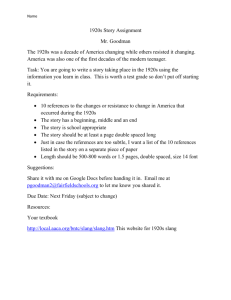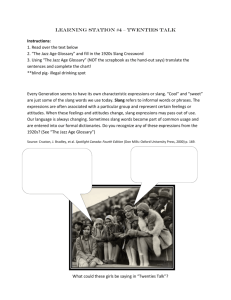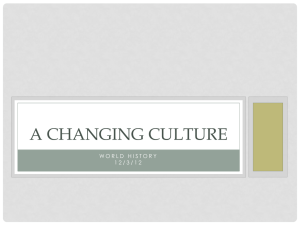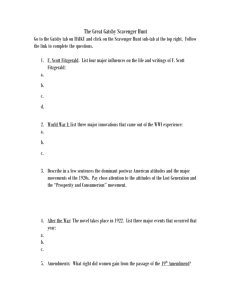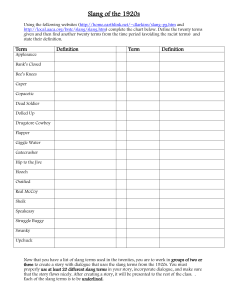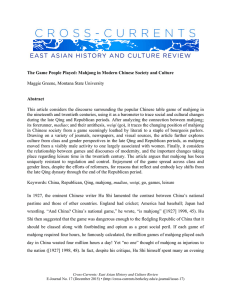Fads and Popular Language In the 1920s
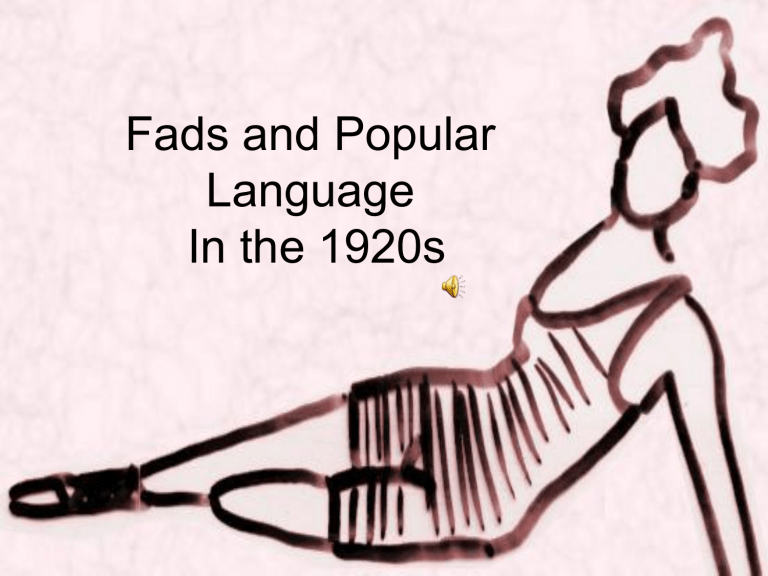
Fads and Popular
Language
In the 1920s
Popular Language/Slang
In the 1920s, slang started to gain popularity.
Morals were now being questioned, and youth culture was on the rise because of urbanization. Prohibition was causing people to use slang to hide bootlegging, and to help keep speakeasies hidden. Other people just wanted to be unique.
Some slang popular back in the 1920’s are the following:
ﷲ baloney - nonsense
ﷲ cheaters - glasses
ﷲ darb - excellent person or thing
ﷲ dumb Dora - stupid girl
ﷲ flat tire - dull, boring person
ﷲ gaga - crazy/silly
ﷲ gam - girl’s leg
ﷲ hard-boiled - tough
ﷲ hotsy-totsy - pleasing
ﷲ Jake - okay
ﷲ nerts - interjection of disgust
ﷲ ritzy - elegant
ﷲ Sheba - young woman with sex appeal
ﷲ Sheik - young man with sex appeal
ﷲ spifflicated - drunk
ﷲ white cow - vanilla milkshake
Clothing Trends
Some clothing that was trendy back in the 1920s for females were: shorter skirts, cloche hats, silk stockings, fake jewelry, furs, and turned down hosiery.
Some clothing that was trendy back in the 1920s for males were: knickers, bow ties, and “oxford” bags.
Dance Marathons
Dance Marathons became very popular in the 1920s. They gained popularity because it was suppose to be quick easy money for out of work people. Most people went for the money, but other went to gain stardom. The music was played slow to hopefully lull you to sleep, but twice an hour it would be picked up, these were called sprints. The only real rule was, no falling asleep. Some contests would have breaks, but usually only a half hour for the first week, and it would go down until there were none left. There was the occasional staged contestants, to help cause fights and to entertain onlookers.
The longest dance marathon recorded was twenty-two weeks and three and a half days. Dancers would do anything to win, one woman would even pickle her feet. Dance marathons were later outlawed due to the hard physical strain.
Games
Games started to gain popularity in the 1920s.
Whether you were playing with your family or friends, it was a guaranteed good time. Some popular game were,
Mahjong, Ouija boards, and Crossword puzzles.
Mahjong - is a game similar to Dominos.
Ouija boards - a game where you supposable talk to “spirits”.
Crossword puzzles - a word game where you fill in the blanks, with the information they give you.
Fads
H is name was Alvin Kelly but he was best known as
"Shipwreck" Kelly. Employed as a professional stuntman in
Hollywood, Kelly decided to attempt to sit on a flagpole in response to a dare from a Hollywood friend. He sat upon the pole for 13 hours and 13 minutes and began a national spectacle.
Kelly's stunt occurred in 1924 and within weeks hundreds of people were trying to call themselves the "King of the Pole." One man sat for 12 days, another for 17 and another for 21 days. Public fascination was phenomenal as huge crowds would gather to watch the participant. With such a large audience, the publicity-hungry
Kelly decided that he must once again be King. In Atlantic City, New
Jersey, Kelly sat atop a flagpole for a record 49 days in front of an audience of 20,000 admirers.
Flagpole sitting died out around 1929 with the coming of the
Depression, but during its time, it certainly caught the nation's fancy.
Flappers
Flappers were considered the loose moraled, modern women of the 1920s. They wore short skirts baring their arms and lower leg, had bobbed hair, rolled down their hose, and powdered their knees. The typical flapper was a considerably young woman and often offended the older generation. Women were finally starting to forget traditions, and being the stay at home wife, and enjoying who they were.
Overview
-*The 1920’s brought on the rise of youth culture.*
-Popular Language - Used to seem unique, urbanization played a big role.
-Clothing Trends - Also used for uniqueness, to get away from tradition, to be risqué.
-Dance Marathons - Big way to make quick money, something to do in spare time.
-Games - Help to kill time, Mahjong, Ouija boards, Crossword
Puzzle.
-Music - Jazz was popular, mainly among youth, blamed for everything, if you danced to Jazz you were considered morally loose.
-Flappers - Modern woman of the 1920s, short hair, short skirts, sleeveless baggy dresses, rolled down hose, powdered knees, lots of makeup, thought to be morally loose, offended older generations.
Bibliography
Books
- “The Jazz Age, The 20’s.” By the editors of Time-Life Books.
Alexandria, Virginia.
Webpages
- “American Culture History - Decade 1920-1929.” http://kclibrary.nhmccd.edu/decade20.html. 2/10/2004
- “StreetSwing’s Dance History Archives - Dance Marathons.” http://www.streetswing.com/hismain/d5marthn.htm. 2/10/2004
- “Slang from the 1920’s.” http://chicago.demoe.com/pictures/slang.html. 2/12/2004
- “Modern America 1914 - Present - Slang.” http://www.uncp.edu/home/canada/work/allam/1914-
/language/slang.htm. 2/13/2004
- “The Jazz Age : Flapper Culture & Style.” http://www.geocities.com/flapper_culture. 2/21/2004
